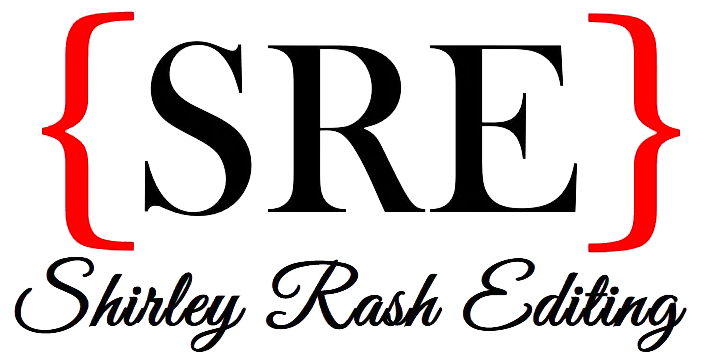I know any mention of the A Song of Ice and Fire series, its author George R. R. Martin, or its TV adaptation Game of Thrones can lead to some, ahem, passionate debate. And truthfully I’m not particularly interested in most of those debates. I’ve read the books a couple of times and enjoyed them, have my own theories on whether or not Martin will ever finish them, and liked the TV series well enough while also still having my own critiques. What I want to talk about here, though, is Martin’s use of POV, which I find quite well done for the most part. You don’t have to be a fantasy writer to learn some excellent lessons on what to do and what not to do with juggling multiple POVs from these books.
It’s not really possible to quickly summarize these five dense books filled with hundreds of characters, but the basic gist of them if you’ve never read them or watched the show is that a series of events trigger a power struggle over the throne in Westeros, with multiple contenders in play. Meanwhile, eerie, disturbing developments in the far reaches of the realm may render the fight over who’s king (or queen) moot.
Each book starts with a prologue from a relatively minor character before switching to chapters that rotate between limited third-person narration divided among several characters. The number of POV characters expand in each book, and the POV characters are a pretty diverse cross-section of characters. In the first book, they include the stolid best friend of the king, who goes against his better instincts to join his friend in the capital; his wife and some of his children as they navigate this new family dynamic; the surviving daughter of the former king, her family driven from Westeros by the current king and that same stolid best friend; and the queen’s brother.
What works well?
One of the things you may notice about this list is that a lot of the narrators are not exactly whom you think of as power players. You never get a POV chapter from the king, for example. Instead, you see him only through the lens of his friend, his friend’s family, his brother-in-law, and a potential rival. This is repeated throughout the series with many of the occupants of the throne or contenders for the throne never having their own POV chapters.
It would be easy for an author to want to fight the limits imposed by this system, but Martin actually uses it quite effectively in the first books. One of the big themes of the books is wanting to subvert reader expectations about epic fantasy, and pulling a Great Gatsby and making side characters the narrative focus helps him achieve this goal. Another theme explored throughout isn’t so much the effect power has on the ruler but on the ruled, which is another reason this choice of POV makes sense.
It’s particularly interesting how he applies this to Robb Stark. If you’re familiar with the story, you know who Robb is. If you’re not, let’s just say that Robb is a teenaged military prodigy who goes on a pretty epic revenge campaign after the murder of his father. That . . . doesn’t end the way you would expect it to–and the fact Robb is never a POV character, despite seeming to be so essential to the story, is a pretty good early tell. That’s not to say that we don’t get a good sense of Robb and his strengths and weaknesses, but we always get those filtered through to us via other characters, especially his mother.
I’ve talked before about embracing the limits of the narrative structure you choose, and Martin does this really well concerning Robb. It would be tempting to want to follow Robb through his string of stunning military victories, but more often than not, they happen off the page anyway. Martin resists the urge to try to shoehorn them in, and the books are all the better for it.
Martin also has multiple child and teen narrators, and though he has expressed some regret in hindsight at having such young characters, he does a good job of maintaining their childlike innocence and not usually making them seem too precocious with their insights. As adult readers, we understand the implication of what they’re seeing and hearing and experiencing far more quickly than they do.
Another thing that Martin does particularly well with POV is how well he juxtaposes the various characters’ perspectives against each other. In the process, he fleshes out all the characters far more than if he’d just used an omniscient POV or limited the POV to only one character. The characters live in a world inspired by medieval Europe, and their culture subscribes to conventional medieval ideals about honor and chivalry. Quite a few of our narrators are marginalized in some way by society–either through circumstances of birth (being born illegitimate or with a disability) or past actions (committing dishonorable actions)–and Martin has a lot of fun juxtaposing the POVs of more judgmental, conventional characters, who tend to assume the worst about these characters, with a much more complicated, nuanced reality.
In what I consider one of his best usages of POV in the long run, one particular character is set up for multiple books as a particularly dishonorable and untrustworthy man. His list of offenses are long–and not inaccurate–but when Martin finally introduces this character’s POV in the third book, we see that he is a lot more complicated than many people assume him to be. We also learn that he has his own code of honor, even if nobody else thinks he does, and that he has some genuine grievances against people who are widely considered honorable, by the customs of this society. One of the other main themes of the series is how complicated people are and how appearances can be deceiving, and Martin’s use of POV in the books also reinforces this theme nicely as we have to filter through what we learn about the characters to get at what actually happened and what is actually true. It also helps ensure that rereading is never boring since you always end up picking up on new details embedded in each POV that take on new significance.

What doesn’t work as well?
The span of Martin’s series has generated a lot of media coverage and debate over the years since, as he readily admits, he initially underestimated how much time he needed to develop such a complex plot, so what was supposed to fit into three books is now projected to fill seven and Martin has infamously blown multiple deadlines to finish writing the next book (number six). In tandem with this, the sheer number of POVs also expanded significantly as Martin realized he needed more books to tell this story.
In the first three books, Martin is juggling eight to ten character POVs. By most standards, that’s a lot of POVs, but Martin handles them well. By the fourth book, he is up to twelve, and by book five, it leaps to sixteen. In fact, the last two books were submitted in one manuscript and proved so unwieldy that Martin’s editors ended up dividing it in half but not by chronology. Instead, the chronology between the books overlaps, and the division is more centered on geographic location.
Though I do like some of the added POVs in the last two books, the sheer number of them added in the last two books are responsible for bogging down some of the action. (I also wouldn’t be surprised if it’s part of the reason he is having such a hard time finishing, but that’s purely an armchair guess.)
The fourth book, A Feast of Crows, tends to provoke a lot of ire among fans, but I actually rather enjoy it. It abandons quite a few fan favorite POVs–that I never have enjoyed quite as much as many other people seem to–to really probe the effect the civil war has had on everyday people, and I consider the book an effectively vivid example of the aftermath of opportunists picking over the remains of society (“the feast of crows” in the title). I personally have more mixed opinions on A Dance with Dragons, the fifth book, though when I reread it a couple of years ago, I liked it more than I remembered.
One of the reasons these books are so divisive in the series is that, for many fans, they’re padded with POVs from characters they don’t care about, and I think that is a valid criticism and something to be mindful of when juggling multi-POV. It’s not unusual for readers to develop their favorite POV characters that they look forward to reading and others that they endure to get to what they like. Some readers will even skip POV chapters from characters they especially dislike. As I said earlier, I do actually enjoy some of the new POVs introduced (while not particularly caring for others), but the sheer quantity of them makes it hard for him to develop these POV characters as fully as he does in the earlier books. The fact that old favorite characters are entirely absent from entire books to make room for the new characters didn’t set well with a lot of readers either and is a recurring complaint about the final two books.
I’d argue that an extension of this problem is that Martin also stops being as comfortable with leaving action off the page. It’s no longer him letting Robb Stark have a string of victories that we never experience directly, so additional POVs are added to the fourth and fifth books solely to provide us with a lens into these settings and plotlines. It’s hard to evaluate how essential those POVs are without seeing Martin’s true endgame for his series, but the readers’ perception that they are not particularly necessary is not an effective development of POV, in my opinion.
What should you know about POV?
I am hesitate to ever state conclusively what is the “right” number of POVs for a manuscript. Certainly, some readers have preferences for books that stay in one POV or are omniscient or juggle multiple POVs. Personally, as a reader, I enjoy books that juggle multiple POVs well.
My advice to writers is always to consider the story you’re telling (and its characters and themes) and let that dictate how many POVs you have in the story. Is this a story that needs a focused deep dive into one POV or does it have a breadth that would be better covered with omniscience or does it have aspects that lend it well to multiple POVs?
In the same way, if you’re writing multiple POVs, these same questions can help you with determining how many are too many. Are these POVs essential to the story, the characters, and the themes or is it being used more to just give readers a narrative camera for one particular setting or plot? If it’s the latter, is the action being described something that can happen off the page?
There is no universal right answer to these questions, but as a general rule, there is a right one for your particular manuscript.
Next time, to wrap up this series on POV, we’re going to look at one of my favorite genres–epistolary fiction!
What’s Your Story series:





